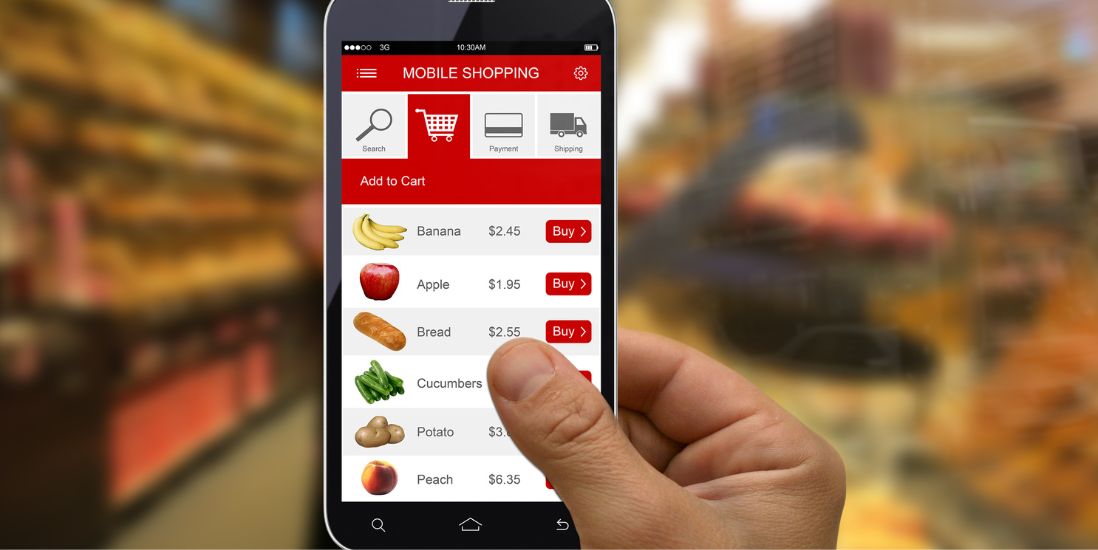The e-commerce industry has experienced remarkable growth over the past decade, propelled by the increasing convenience and accessibility of online shopping. However, this surge in popularity has also intensified competition, making it challenging for businesses to differentiate themselves and capture the attention of discerning consumers.
Staying ahead of the curve is paramount for businesses to not only survive but thrive. As consumer preferences and behaviors undergo a constant transformation, retailers must adapt and innovate to keep pace and remain competitive.
In this blog post, we’ll list the top 20 e-commerce trends shaping the industry in 2023, offering valuable insights into how businesses can leverage these trends to enhance customer experiences, boost sales, and secure their position in the digital marketplace.
1. Live shopping

Live Shopping is transforming e-commerce by providing an interactive, real-time shopping experience. Unlike conventional online shopping, live commerce fosters direct engagement, creating a more personalized and dynamic connection between brands and consumers. Live shopping reshaping the future of online retail, especially gaining traction among Gen Z in the first quarter of 2023.
According to recent findings from Statista, a significant 32 percent of Gen Z respondents identified exclusive discounts and sources of inspiration and ideas as the primary advantages of engaging in live shopping experiences. Moreover, over 30 percent of Gen Z shoppers highlighted the importance of real-time engagement and a more interactive shopping experience.
This emphasizes a shift towards a personalized and engaging retail environment, where consumers not only seek products but also a sense of connection and interactivity during their shopping journey.
2. Revolutionizing transactions by digital payments

Digital payments have propelled the industry into an era of unprecedented convenience. This also reflects a broader shift in consumer preferences toward secure, efficient, and contactless payment options. Digital payments in e-commerce are not merely a facilitator but a transformative force underscoring the need for businesses to adapt to the digital economy.
According to Statista’s report, the digital payments market is set to reach an impressive US$9.46 trillion in total transaction value by 2023, with an annual growth rate of 11.80%, projecting a total of US$14.78 trillion by 2027. Digital Commerce is a key driver, expected to lead with a total transaction value of US$6.03 trillion in 2023.
Globally, China leads with a cumulative transaction value of US$3,639.00 billion in 2023. This surge in digital payments reflects a fundamental shift in consumer behavior, with e-commerce playing a pivotal role in shaping this transformative trend.
3. Instant fulfillment with on-demand groceries

On-demand grocery is a rising e-commerce sector where customers order essential items online for prompt doorstep delivery. This convenient service, facilitated through digital platforms, eliminates the need for physical store visits, catering to the growing trend of consumers seeking efficient, contactless solutions for their everyday needs.
The On-demand Grocery Delivery market is poised for substantial global growth, provided by Statista, projecting revenue of US$627.30 billion by 2023 with a robust 16.11% compound annual growth rate (CAGR) from 2023 to 2027, reaching a projected market volume of US$1,140.00 billion by 2027. Retail Delivery, the largest segment, is expected to hit a market volume of US$486.50 billion in 2023.
Globally, China leads with a forecasted highest revenue of US$226,100.00 million in the same year. The average revenue per user (ARPU) is expected to be US$449.00 in 2023, with the user base projected to reach 1,995.0 million users by 2027, indicating an estimated user penetration of 18.2% in 2023.
The United States has witnessed a surge in grocery delivery demand amid the ongoing COVID-19 pandemic, reflecting a shift in consumer behavior towards prioritizing convenience and safety and integrating on-demand grocery services into their evolving needs and expectations.
4. Data privacy of e-commerce

In e-commerce, data privacy entails protecting customers’ sensitive information from unauthorized access. E-commerce platforms must implement robust security measures to ensure data confidentiality, build trust, and address concerns about breaches as online transactions become more prevalent.
A recent survey spanning France, the UK, Germany, and the US reveals heightened consumer concerns about data privacy in e-commerce. Top worries include the security of financial/banking information (78%), security data (75%), and identity data (70%), with medical data (61%) and contact data (57%) also significant.
Provided by Identity Theft, 2022 saw 1,774 recorded data breaches, impacting 422 million individuals at an average rate of 4.8 daily breaches. A substantial 33% of global consumers have personally experienced a data breach, emphasizing its widespread impact.
Notably, 44% of these breaches compromise customer names, email addresses, and passwords, underscoring the urgent need for robust data protection measures within the e-commerce sector.
5. Social commerce

Social commerce integrates social media and e-commerce, allowing users to discover and purchase products within the social platform. It leverages user reviews and influencer endorsements for a personalized and interactive shopping experience, representing a dynamic evolution in online retail.
According to Insider Intelligence, Social commerce in the United States is rapidly growing, with 2023 sales at $68.91 million, accounting for 5.9% of online sales—an increase from $39.51 million in 2021. Pinduoduo, China’s second-largest online marketplace, achieved significant growth with 263 million monthly visits and a Q3 2022 revenue of $4.99 billion, a 65% YoY increase.
Looking ahead, social commerce is set to expand, with Pinterest and TikTok gaining prominence by 2025. TikTok, a shopping inspiration hub, saw nearly 60% of early 2022 users using it for inspiration. In Q3 2022, 48% of surveyed TikTok subscribers expressed interest in purchasing the platform within the next three months, highlighting TikTok’s growing influence in social commerce.
6. Mobile e-commerce development

Mobile e-commerce development focuses on creating user-friendly digital platforms for seamless online transactions and optimizing websites and applications for convenient navigation and purchasing. As mobile usage continues to grow, effective mobile e-commerce development becomes essential for businesses aiming to provide a hassle-free shopping experience for customers on their smartphones.
According to Statista’s Market Insights, mobile e-commerce development has witnessed a significant surge, reaching a staggering $2.2 trillion in sales in 2023, constituting 60% of global e-commerce sales. The upward trajectory of mobile e-commerce is evident in its growing share of overall e-commerce, climbing from 56% in 2018 to an anticipated 62% by 2027.
This trend aligns with the substantial increase in mobile e-commerce sales, projected to reach $3.4 trillion in 2027, reflecting a remarkable expansion from the $982 billion recorded in 2018. The robust growth of mobile e-commerce underscores its pivotal role in the global expansion of the e-commerce sector.
7. Domination of short videos

Short-form videos, lasting seconds to a few minutes, are concise and engaging visual content found on platforms like TikTok and Instagram Reels. Known for their dynamic nature, they efficiently convey information and captivate audiences, making them a popular and effective mode of communication for businesses and creators in the digital realm.
According to Hootsuite, consumers are increasingly drawn to short-form videos, with 73% expressing a preference for this engaging and concise format when seeking information about products or services. The appeal lies in the quick delivery of information and the entertainment factor embedded in these bite-sized videos.
Not only favored by consumers, short-form videos also prove to be a smart investment for businesses. Business2community reports that short-form video marketing boasts the highest return on investment (ROI) compared to any other social media strategy, standing at an impressive 30%. This emphasizes the financial benefits of crafting effective and captivating short-form video campaigns.
8. The impact of voice search

Voice searching is a technology-driven method where users use their spoken words to interact with devices and perform online searches. This form of search utilizes voice recognition technology, allowing users to access information, execute commands, or perform tasks simply by speaking.
This hands-free and intuitive approach to searching has become increasingly prevalent with the rise of voice-enabled devices, such as smartphones and smart speakers, offering users a convenient and efficient way to access information in our digitally connected world.
In 2023, according to TechReport, approximately 27% of individuals utilize voice search on mobile devices, marking a notable increase from the previous year when the overall percentage of voice search users was below 40%. Interestingly, the percentage of people employing voice search on non-mobile devices decreased, emphasizing the prevalence of mobile devices in voice-activated searches.
The global landscape of voice assistants is evolving, with approximately 4.2 billion worldwide in 2023, projected to surge to over 8.4 billion by 2024, indicating a substantial 100% growth rate. Furthermore, the voice search shopping market is on a robust trajectory, with industry experts anticipating it to exceed $40 billion in 2024, highlighting the significant economic impact of voice-activated shopping experiences.
9. Streamlining with one-click ordering

One-click ordering streamlines e-commerce by allowing users to make purchases with a single click, eliminating traditional checkout steps. This innovative system, notably used on platforms like Amazon, simplifies the buying process by securely storing customer information, enabling instant purchases, reducing friction, and enhancing efficiency.
Followed by Statista report, the impact of “one-click buying” on customer behavior is evident from a study of 977 users at a large Asian retailer. Data on clickthrough patterns revealed that one-click buyers visited the website 7% more often, viewed 9.3% more pages and spent 7.8% more time per visit compared to before sign-up.
Moreover, the study found that customers who adopted one-click buying spent more on average, increased their purchase frequency by 43%, and raised the number of items purchased by 36% compared to their pre-one-click days. This demonstrates the tangible benefits of streamlining the purchasing process, making it more efficient and enticing for online shoppers.
10. Navigating e-commerce through voice shopping

Voice shopping is a pioneering trend in online retail, enabling consumers to effortlessly make purchases through verbal commands using virtual assistants or smart speakers. This innovative approach streamlines the shopping process, allowing users to verbally order products or add items to their carts without navigating traditional online platforms manually.
According to OnlineDasher, voice commerce has experienced remarkable growth, soaring by 321.74% in the past two years (2021-2023), and is projected to continue expanding with a 54.63% growth rate in 2024. Transactions are set to surge from 4.6 billion USD in 2021 to an impressive 19.4 billion USD in 2023.
Notably, 22% of consumers make direct purchases through voice, and 17% utilize it for reorder purposes, emphasizing the increasing popularity of voice-assisted transactions. In 2021, over 45 million US consumers embraced voice technology during online shopping, marking a substantial 120% increase from 2018.
60% of US e-commerce shoppers report making daily or weekly purchases through home voice smart assistants, and a high satisfaction rate of 80% reflects the positive reception of voice-assisted shopping experiences.
11. The evolution of mobile app retail

Mobile app retail is central to modern shopping, offering convenience and personalized experiences. Users can seamlessly browse, shop, and transact on their devices with features like push notifications and personalized recommendations. With widespread mobile device use, these apps have become vital for businesses to connect with customers, build loyalty, and facilitate secure transactions.
Mobile apps have become essential for shopping, according to Go-Gblobe, with 72% of consumers recognizing their role in streamlining the experience. On average, smartphone users have 4.2 shopping apps installed, and 58% have used a shopping app in the past month, with 49% seeking discounts. Millennials, at 58%, prefer shopping apps over the mobile web, highlighting their significant impact.
Satisfaction with retail apps is evident, with 71% expressing enjoyment in their shopping experiences. Additionally, 57% of users shop regularly through mobile apps, and 46% are more inclined to use apps than shop online. These trends underscore the substantial influence of mobile apps on modern shopping habits, offering both convenience and satisfaction to consumers.
12. Market expansion through omnichannel selling via marketplaces

Omnichannel selling via marketplaces integrates product offerings across online and offline channels, emphasizing popular platforms like Amazon and eBay. This strategy ensures a unified customer experience by synchronizing inventory, pricing, and promotions. The goal is to meet customers on their preferred shopping platforms, fostering consistency, and enhancing brand presence and satisfaction.
Followed by Statista, a significant shift in consumer behavior is evident, with over 60% participating in omnichannel shopping. The report highlights that 60%–70% of consumers perceive online browsing and social media shopping as the new norm for discovering and purchasing products. This trend is anticipated to grow further, along with a growing reliance on social media influencers for product recommendations.
Interestingly, 40% of shoppers commence their buying journey with a broad online search rather than directly visiting specific websites or platforms like Amazon. Instead, they prefer to initiate their product research through online browsing and subsequently narrow down their choices on channels such as Amazon or Facebook.
13. Unleashing the potential of AI

Artificial Intelligence (AI) entails machines simulating human intelligence for tasks such as learning and problem-solving. Using algorithms, AI analyzes data to recognize patterns and enhance performance. Divided into narrow AI for specific tasks and general AI with human-like intelligence, applications range from virtual assistants to image recognition, impacting daily life and industries
According to Accenture, business leaders are increasingly recognizing the transformative power of Artificial Intelligence (AI) for driving growth, with a notable 84% of C-level executives expressing the imperative to adopt and leverage AI to achieve growth objectives. The global AI market is expected to reach $190.61 billion by 2025, exhibiting a robust compound annual growth rate of 36.62%.
The proliferation of AI assistants is set to surpass the global population, with forecasts indicating the presence of 8.4 billion AI-powered digital voice assistant units by 2024. Additionally, a survey by Strategy Analytics reveals that 41% of respondents in key regions, including India, China, Western Europe, and the United States, anticipate that AI technologies will contribute to an improved quality of life.
14. Enhancing Reality with Augmented Reality (AR)

Augmented Reality (AR) seamlessly overlays digital information, blending physical and virtual elements for an interactive user experience. Unlike Virtual Reality (VR), AR can be experienced through devices like smartphones or AR glasses, enriching interactions in many fields. This technology transforms how users engage with their surroundings by integrating digital enhancements.
According to Threekit, the projection of 1.4 billion AR device users by the end of 2023 signifies the widespread adoption of Augmented Reality (AR) technology. Despite its potential, only 1% of retailers currently report utilizing AR. AR in elevating customer engagement is underscored by the fact AR product experiences are 200% more engaging than their non-equivalents, providing a more immersive and interactive shopping environment.
This resonates with consumers, as 61% express a preference for retailers offering AR experiences. The technology’s growth is reflected in its estimated market value of $50 billion by 2024, highlighting the expansive potential of AR across diverse industries, from medicine to automotive to entertainment and beyond.
15. AI conversations: the world of chatbots

Chatbots are AI-powered computer programs designed for interactive conversations, employing natural language processing. These applications, integrated into platforms like websites and messaging apps, deliver automated responses to users. Widely used for customer support, chatbots enhance user experiences by streamlining communication and automating routine tasks to overall business efficiency.
According to Outgrow, the incorporation of chatbots is proving highly lucrative across various industries, with real estate leading at 28%, followed by travel (16%), education (14%), healthcare (10%), and finance (5%). The top five countries embracing chatbot technology are the United States, India, Germany, the United Kingdom, and Brazil, collectively hosting around 1.5 billion chatbot users.
In 2023, the chatbot market grew significantly, with over $994 million and an annual gain of approximately $200 million. With a current compound annual growth rate (CAGR) of around 22%, experts foresee this figure reaching $3 billion by the end of the decade. Another noteworthy trend is the ascent of AI-powered GPT-3 chatbots, utilizing OpenAI’s advanced natural language processing model.
16. Subscription services for convenience

Subscription services involve customers paying recurring fees, usually monthly or annually, to access across diverse industries. This model provides convenience for users and offers businesses predictable revenue streams and opportunities for long-term customer relationships. In the digital age, subscriptions have become popular, reflecting a shift from ownership to access a prevalent approach for companies.
According to Statista, in 2017, 4G subscriptions stood at 2.75 billion, projected to increase to 5.15 billion by 2020. Fast-forward to 2023, and approximately 50% of global consumers either subscribe to or plan to subscribe to various services, with convenience identified as the leading motivator.
Another finding is that Indian users are willing to pay for an average of 3.3 video streaming services, surpassing respondents from other countries. In contrast, Chinese consumers prefer an average of 1.5 subscriptions. These trends highlight the widespread subscription services globally, showcasing the impact of technological advancements in mobile subscriptions influencing consumer preferences.
17. The importance of micro/nano-influencer marketing

Micro and nano influencers are social media personalities distinguished by their follower counts. Micro-influencers typically have 10,000 to 100,000 followers while nano-influencers range from 1,000 to 10,000 followers.
These influencers focus on specific topics, fostering authentic connections. Brands favor them for partnerships due to their higher engagement and the belief that they provide genuine and personalized interactions with audiences.
According to Influencer MarketingHub, in the domain of influencer marketing, an overwhelming 82% believe it attracts high-quality customers, surpassing other marketing types. When it comes to choosing influencer partners, 39% of brands prefer nano-influencers (1K-10K followers), while 30% opt for micro-influencers.
Notably, fewer brands focus on larger influencers, with 19% selecting macro-influencers and 12% mega/celebrity influencers.
Additionally, the higher engagement rates of nano and micro-influencers, coupled with their potential for better value, make them appealing choices for brands seeking to connect with specific, dedicated audiences. The shift towards influencer payment tied to increased sales further supports this trend, reflecting a slight increase from the previous year’s 70%.
18. The essence of personalization

Personalization is a strategy in marketing and e-commerce and user experience that involves tailoring content, products, or experiences to individual users based on their specific needs, preferences, and behaviors. Utilizing data and insights about users, personalization creates more relevant and engaging interactions, ranging from personalized recommendations to targeted advertising.
McKinsey & Company’s research highlights the significance of personalization, with 71% of consumers expecting personalized interactions and 76% expressing frustration when expectations are unmet. Faster-growing companies derive 40% more revenue from personalization than their slower counterparts, emphasizing its impact on business performance.
While 48% appreciate the convenience of personalization, they emphasize the crucial need for data security. KPMG’s report further reveals that 40% of individuals distrust companies in their ethical use of data, with 30% outright refusing to share their information. Navigating the balance between delivering personalized experiences and data privacy is a challenge for brands to build and maintain consumer trust.
19. Fostering brand devotion by customer loyalty
Customer loyalty is the outcome of a customer consistently choosing to buy from a specific brand, reflecting connection beyond transactions. Loyal customers are inclined to engage with the brand, contributing to long-term business success. Building loyalty involves understanding customer needs, and creating positive and memorable experiences.
FinanceOnline shows that US companies lose $136.8 billion annually due to brand switching, notably in industries like cable (25%), financial/credit services (25%), general retail (24%), online retail (22%), and telecommunications (21%). This figure spikes to 80% when customers experience more than one negative incident. Addressing negative reviews is crucial, with 57% likely to stop patronizing a brand if feedback remains unaddressed.
Key loyalty influencers include product quality (74%), value for money (66%), and shared values (84.3%). Responsive customer service, with 59% emphasizing the importance of fast, consistent, and satisfactory answers. The global loyalty management market, valued at $4.02 billion in 2020, is projected to reach $13.8 billion by 2026 with a growth rate of 22.7%.
20. The role of customer experience (CX)

Customer Experience (CX) encompasses a customer’s perception and interaction with a brand throughout their entire journey, from initial awareness to post-purchase. It includes factors like user interface, product quality, and customer service. A positive CX is essential for building brand loyalty and encouraging repeat business. Businesses that prioritize and enhance CX stand to thrive in competitive markets.
According to Forbes, CX leaders, comprising 74% of the industry, prioritize the improvement of content and knowledge delivery to customers and employees. For customers, an overwhelmingly positive experience with customer service proves influential, as evidenced by 81% expressing that it heightens the likelihood of making subsequent purchases.
This insight emphasizes the pivotal role of customer service in fostering customer loyalty and encouraging repeat business. The impact of customer service extends beyond individual transactions, with 95% of consumers acknowledging its influence on brand loyalty. Easy access, self-service options, and professional interactions are cited as pivotal factors in this regard.
Read more:
Top 20 eCommerce Accelerators To Grow Your Business Faster
Top 20 Trending Products & How to Sell Them
Trending E-commerce Marketing Strategies To Liven Up Your Online Store

